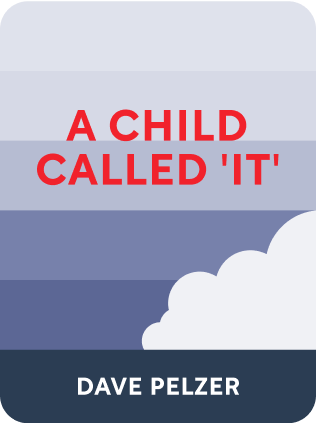

This article is an excerpt from the Shortform book guide to "A Child Called 'It'" by Dave Pelzer. Shortform has the world's best summaries and analyses of books you should be reading.
Like this article? Sign up for a free trial here .
What is a child abuse survivor? What lessons does David Pelzer share as a child abuse survivor?
A child abuse survivor has to overcome the trauma and neglect, but it creates lasting challenges. A Child Called “It” shares David Pelzer’s approach to surviving abuse and taking control of his life.
Read more about what it means to be a child abuse survivor.
Surviving Abuse: David Pelzer’s Perspective
David attributes his survival to the fact that he took control of himself and his circumstances any way he could. He also credits his horrific experiences for shaping him in several ways:
- Going so long without any positive reinforcement helped him develop a strong intrinsic motivation
- Living through such unusual circumstances gave him a unique perspective on life
- Enduring terrible conditions made him adaptable
- Being deprived of so much—including food, a warm bed, and basic dignity—made him appreciate simple luxuries
- Overcoming such huge obstacles and surviving abuse made him strong
Afterword: Being a Child Abuse Survivor
David felt completely alone in his abuse, but thousands of children endure similar atrocities. (Shortform note: As of 2015, the United States had 2.9 million child abuse cases reported annually.)
You’re likely to hear about unusual cases of abuse—such as grisly murders and extreme neglect—in the media. But more often, victims suffer quietly, join gangs, or run away from home.
The hardship is seldom over when the abuse ends: Adult survivors of child abuse are more inclined to lash out or engage in self-destructive behaviors than the general population. (Shortform note: Someone who is a child abuse survivor is 59 percent more likely to be arrested as a juvenile and 28 percent more likely to be arrested in adulthood.)
Many survivors also struggle to build and maintain healthy relationships because they’ve had such poor models; David intentionally broke the typical cycle of abuse in his relationship with his son.
David shared his story of abuse for two reasons:
- To demonstrate the strength of the human spirit under even the worst conditions
- To illustrate how a loving parent can morph into a cruel abuser
David emerged from his experience determined to overcome his troubled childhood by becoming a success. This drive inspired him to serve his country by joining the Air Force, and he feels that he continues to serve others by sharing his story, giving talks, and leading workshops. David wants other victims and survivors to know they’re not alone, and he wants everyone to know that it’s possible to endure anything and emerge triumphant.
Notes From Others About David’s Case
The end of the book includes short notes written by a few people who are either connected to David’s case or to the broader issue of child abuse.
These people are:
- Steven E. Ziegler, David’s fifth-grade homeroom teacher
- Valerie Bivens, a social worker for California’s Child Protective Services
- Glenn A. Goldberg, former executive director of the California Consortium for the Prevention of Child Abuse
Their reactions to this book include a few key points:
- During the period of David’s abuse, in the early 1970s, there was little public awareness about the issue of child abuse and few protections for its victims.
- Outsiders can’t understand the reality and intensity of what a child abuse survivor has endured, but this book offers a glimpse of the experience.
- Unlike David, the average child abuse survivor never speaks out, instead internalizing their pain in self-hatred or lashing out at others.
- On a broad scale, child abuse and neglect had gotten dramatically worse in the decade before this book was published (in 1993).

———End of Preview———
Like what you just read? Read the rest of the world's best book summary and analysis of Dave Pelzer's "A Child Called 'It'" at Shortform .
Here's what you'll find in our full A Child Called 'It' summary :
- How David Pelzer survived horrific abuse at the hands of his mother
- How victims and survivors of abuse can find support and overcome their painful past
- Why child abuse may go unnoticed by other adults






